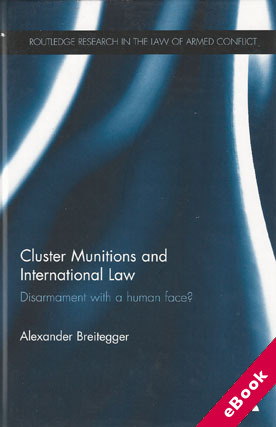
The device(s) you use to access the eBook content must be authorized with an Adobe ID before you download the product otherwise it will fail to register correctly.
For further information see https://www.wildy.com/ebook-formats
Once the order is confirmed an automated e-mail will be sent to you to allow you to download the eBook.
All eBooks are supplied firm sale and cannot be returned. If you believe there is a fault with your eBook then contact us on ebooks@wildy.com and we will help in resolving the issue. This does not affect your statutory rights.
For over sixty years, cluster munitions have caused civilian deaths and injury because of the wide area over which they have an effect, their relative inaccuracy and because of the post-conflict legacy of unexploded sub-munitions.
Originally designed to attack wide-area and fast-moving targets like airfields, military bases or large numbers of personnel or tanks remote from concentrations of civilians, the record of civilian death and injury in past armed conflicts suggests that cluster munitions have frequently not been used in the ways in which they were intended.
This book offers a comprehensive and interdisciplinary legal analysis of restraints and prohibitions, on the use of cluster munitions under international humanitarian law, human rights law, and international criminal law, as well as the recently adopted Convention on Cluster Munitions.
The book analyses of the case law on cluster munitions use before the Ethiopia and Eritrea Claims Commission and the ICTY, as well as recent policy statements from states, organizations and civil societies. The book goes on to offer an in-depth substantive and procedural analysis of the negotiations which led to the 2008 Convention on Cluster Munitions (CCM), in part based on this author’s experiences as an adviser to Cluster Munition Coalition-Austria.
The book clearly demonstrates why the adoption of a specific disarmament treaty, the Convention on Cluster Munitions was necessary for the better protection of civilians from the effects of cluster munitions, and the potential the CCM holds for meeting this objective.